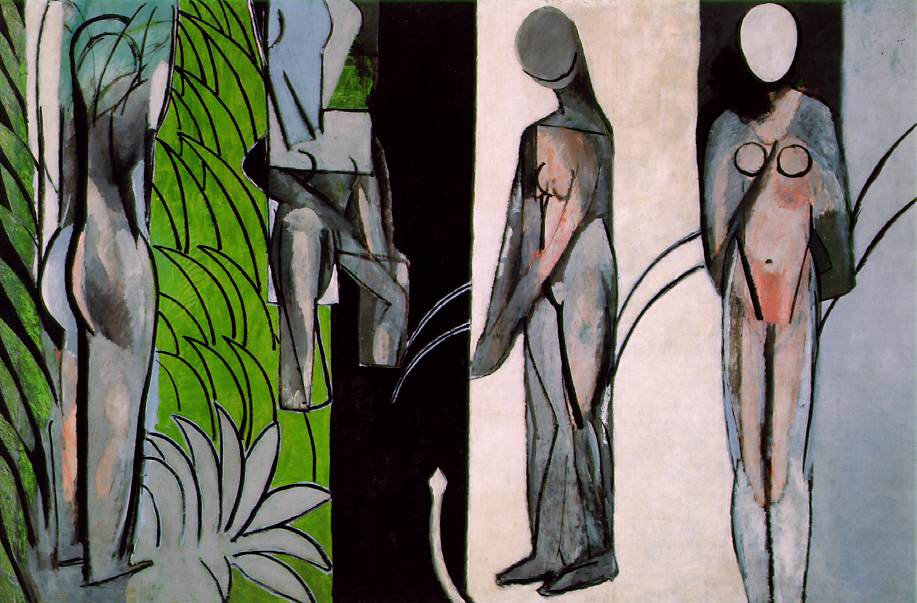art-Matisse.com
Henri Matisse 1869-1954
©Henri Matisse - Bathers by a River 1916
 Bathers by a River |
From the Art Institute of Chicago, Chicago, IL, USA:
Henri Matisse considered Bathers by a River to be one of the five most "pivotal" works of his career, and with good reason: it facilitated the evolution of the artist’s style over the course of nearly a decade. Originally, the work was related to a 1909 commission by the Russian collector Sergei Shchukin, who wanted two large canvases to decorate the staircase of his Moscow home. Matisse proposed three pastoral images, though Shchukin decided to purchase only two works, Dance II and Music (State Hermitage Museum, St. Petersburg).
Four years later, Matisse returned to this canvas, the rejected third image, altering the idyllic scene and changing the pastel palette to reflect his new interest in Cubism. He reordered the composition, making the figures more columnar, with faceless, ovoid heads. Over the next years, Matisse transformed the background into four vertical bands and turned the formerly blue river into a thick black vertical band. With its restricted palette and severely abstracted forms, Bathers by a River is far removed from Dance II and Music, which convey a graceful lyricism. The sobriety and hint of danger in Bathers by a River may in part reflect the artist’s concerns during the terrible, war torn period during which he completed it.
— Entry, The Essential Guide, 2013, p. 250.